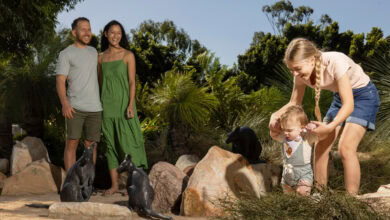Springfield woman Jen Lewis has pledged to run more than 96 kilometres this Saturday in honour of her late father.
Ms Lewis said she was sharing her journey to raise awareness of the dangers of skin cancer, after her father, Vince Elmore, passed away from melanoma.
“Dad devastatingly passed away in March 2018 after a long and courageous battle with melanoma,” Ms Lewis said.
“I will be sharing my journey and raising as much awareness as I can for melanoma and its prevention, causes and treatments along the way.”
Ms Lewis said she is running to fulfil a promise she made to her dad in his final days.
“He asked me to promise him I would do anything and everything I could to prevent his beloved grandchildren suffering in any way from this insidious cancer,” Ms Lewis said.
“So now is the time, I have to fulfil my promise.
“For my dad, and for his grandchildren, I have to help eradicate melanoma, to help find its cure and help prevent the next generation experiencing the sadness, anger and loss everyone affected by the insidious cancer has felt.”
Her route will take her through Ipswich and Springfield Lakes.
“I will be running locally through Ipswich and Springfield Lakes along footpaths and around the Regatta Lake,” Ms Lewis said.
“Even better news is that I will be finishing the day’s run at Ballistic Beer Springfield around 4pm and welcome those who want to come and cheer me onto the finish line to do so.
“There is the added benefit of enjoying a cold beer afterwards.”
Through her run, Ms Lewis is hoping to raise vital funds for the Mater Foundation’s Smiling for Smiddy and the Melanoma Institute Australia.

Image: Jen Lewis pictured with her late father, Vince Elmore.
She said the two organisations were close to her heart.
“My dad received his radiation treatment at The Mater Springfield Cancer Care Centre before passing away in 2018 from melanoma,” Ms Lewis said.
“Throughout his entire journey mum and dad could not fault the care they received from all the staff at the Mater.
“As a Registered Nurse at the Mater I am humbled to be part of an organisation that is able to provide support to patients and families through some of the toughest days.
“The level of support and understanding I received both personally and professionally throughout dad’s battle both in his final weeks and after he passed away was truly exceptional and something I will be eternally grateful for.
“I also chose the Melanoma Institute Australia for the support they gave my dad and our family throughout his battle, and they continue to give to all those sadly affected by melanoma Australia-wide.
“I would also like to support their continued efforts towards raising awareness for the prevention of melanoma through providing vital information of the importance of sun safety and skin checks for all Australians.
“I follow closely the research projects of the Melanoma Institute Australia and would like to raise funds to support these vital efforts towards finding that much needed cure.”
Should you wish to donate, you can visit Ms Lewis’s fundraising pages via the links below:
Melanoma in Queensland
How common is melanoma?
Australia and New Zealand have the highest rates of melanoma in the world, with more than 3,600 people diagnosed with melanoma in Queensland each year.
What causes melanoma?
The main cause of all types of skin cancer including melanoma, is overexposure to UV radiation from the sun or another source such as solariums.
What are the symptoms?
Melanoma can vary greatly in the way it looks. The first sign is often a new spot or a change in an existing mole.
The first sign is often a new spot or a change in an existing mole.
- Size – The spot may appear or grow larger.
- Colour – The mole may become increasingly blotchy with different depth and shades of colour (brown, black, blue, red, white, light grey, pink or skin-coloured).
- Shape or border – The spot may increase in height, become scaly, have an irregular edge (scalloped or notched) or lack symmetry (the halves look different).
- Itching or bleeding – The mole may itch or bleed at times.
- Elevation – the spot may start as a raised nodule or develop a raised area, which is often reddish or reddish brown.
For more information visit Cancer Council Queensland’s website.


